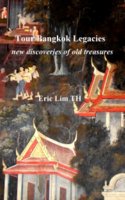| Back to Back Issues Page |
 |
|
Bangkok Travelbug August 14 Ancient cities in Prachinburi July 29, 2014 |
| Hello
Brief history of Prachinburi Prachinburi (prachin – eastern, buri – city) has a long history dating back to the Dvaravati period (6th – 11th C). Dvaravati is the Buddhist civilization that had a profound influence on Buddhist art and architecture in central and north-eastern Thailand with its major centre in Lopburi in central Thailand. With the rise of the Angkor Empire, Khmer influence spread over the region with Lopburi as a province of Angkor. Lopburi extended its influence over the surrounding region which included Nakhon Nayok and Prachinburi. The population in the region was predominantly Khmer and Mon. The ancient cities in Si Mahosot can be traced back to the Dvaravati and Lopburi period. Later in the Rattanakosin era, King Rama IV changed the status of Prachinburi from that of a region to a province. Prachinburi then was much larger than what it is today. In 1993, large parts of the eastern sector of Prachinburi were separated to form the new province of Sa Kaeo on the Thai-Cambodian border. Let’s take a tour of these ancient cities in Si Mahosot district. Table of contents Sra Morakot Ancient City The ancient city of Sra Morakot is located in Si Mahosot district about 3 km south of the Si Mahosot ancient city. Sra Morakot is a city complex dating back to the 9th C. Over time additional structures were added to the original ones. Sra Morakot was known to local residents of ages and in 1935 the community leaders tried to get it registered as national monument. I am unclear as to whether they were successful or not. But from the little that’s left of the ruins, not much was done to preserve or restore them. All that’s left of this ancient city are:
The area around the ruins is green and cool even on a hot day in May. 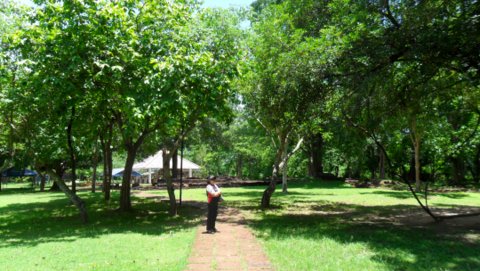
The a cool and green environment We came across this pile of old ruins before getting to the building housing the Buddha’s footprints. 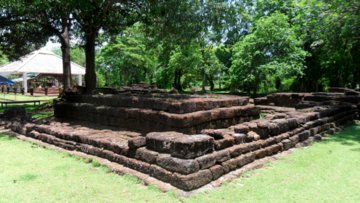
The building with the footprint is to the far left 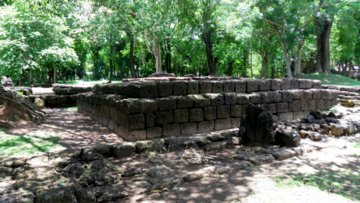
This appears to be the ruins of a second building 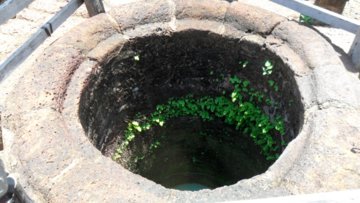
An old well just outside the building The area where Buddha’s footprints are located is surrounded by a wall and covered with a roof. The structure was undergoing restoration during our visit. 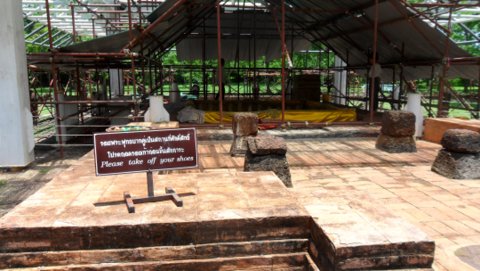
Please remember to remove your foot wear The footprints are in a pit in the centre and here are the prints. 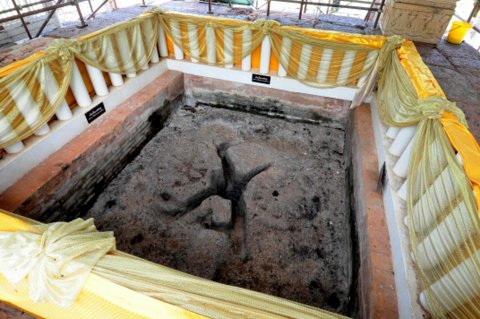
Age-old prints The stones around appear to have been heavily pitted by time and the weather; some have taken very unusual shapes. 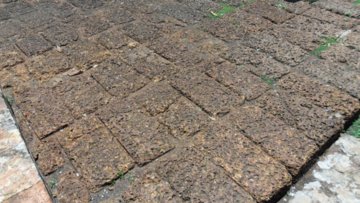
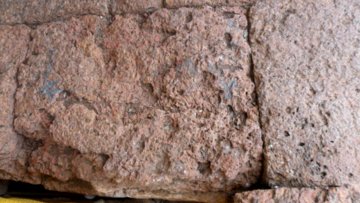
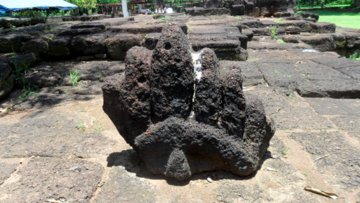
This is a view of the entire set ruins including the building with the footprints. Keep this image in mind. What did this place look like before? We found out as we strolled along. 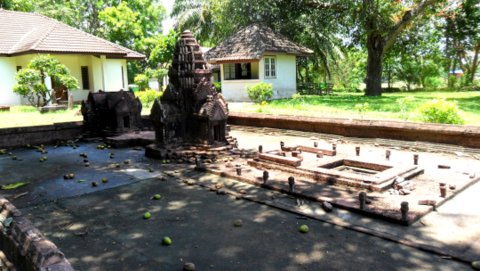
A re-constructed model of the buildings Note the two structures in the background; they are the two piles of rocks we came across earlier. The Buddha’s footprints are in the pit on the extreme right. 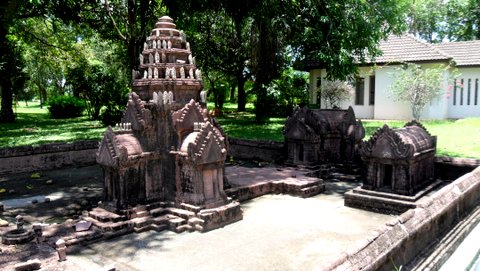
Close-up the buildings The single-storey building in the background used to house displays of the artefacts which are now in the Prachinburi National Museum. It’s a pity that these old structures have not been preserved or restored. The real structures would be such grand sight to behold! We continued exploring the area and only managed to locate one pond Sra Morakot (sra – pond, morakot – emerald) which gave the place its name. Unfortunately it was almost dried out during the dry season. We could have missed it if the residents in the area didn’t point it out to us. 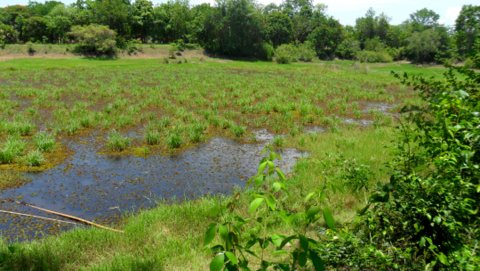
Sra Morakot – the Emerald Pond Even the community temple in the area has adopted the same name. 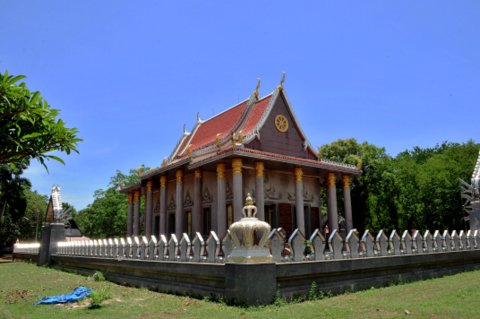
Wat Sra Morakot – contributed by Lim Siew Hwei Table of contents Si Mahosot Ancient City The Si Mahosot ancient city is just three km north of Sra Morakot. But it wasn’t easy to find. Our first stop in the area was at an ancient pond Sra Kaeo that was built in the 5th - 6th C. There are carvings of 46 different animals around the inner sides of the pond. 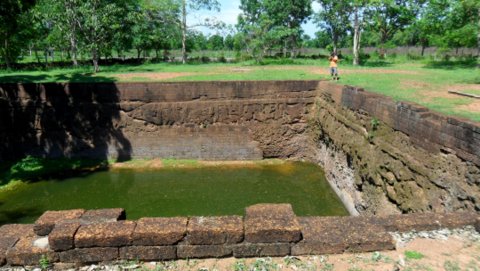
Sra Kaeo – the ancient pond You can have an idea of the size of the pond by comparing it to the figure standing at the top right corner. These carvings on the sides have been eroded over time and we can barely make out the shapes. 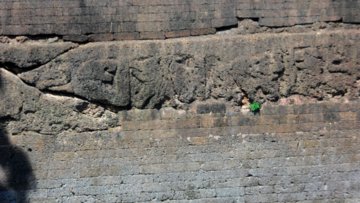
Worn through the passage of time Now came the hard part, finding the ruins of the ancient city. We had to stop many times to ask several residents living in the area for directions. The answer was always the same, It’s all around, just keep on driving and you’ll get there". We kept on driving and only saw trees. Finally we stopped to ask a resident working on his garden. He kindly stopped his work and took me across the road and up the embankment. He pointed below and there, beneath the undergrowth and sediment, were the old walls. We had been driving round and round the city walls without realizing it! 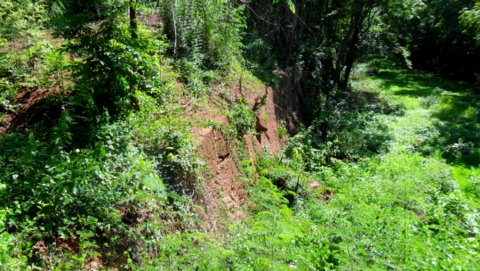
Walls of the old city The walls have been covered up almost to the top by layers of sediment probably deposited over the centuries of flooding by the Bang Pakong. The trees and undergrowth hid the rest. Based on information from the Prachinburi National Museum, Si Mahosot was built about 7th AD. The animals carved around the sides of Sra Kaeo are based on Hindu mythology. The dimensions of the ancient city are about 1,550m x 700m and there is a moat around the city. This is the old map displayed in the Prachinburi National Museum and a 3-D mock-up. 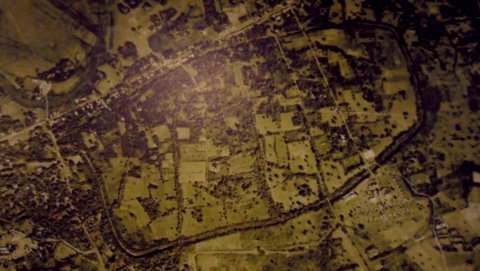
Map of the old city 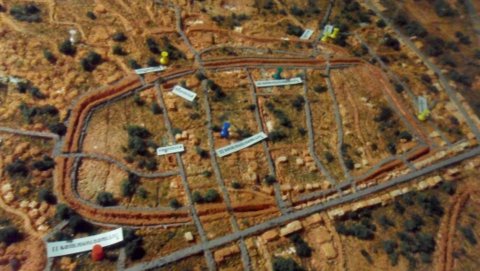
3-D mock-up Compare these maps with the Google satellite map. View Outline of the ancient city in a larger map From what we could see on the ground, there appears to be a double ring of walls around the city. This is confirmed from an examination of the maps in the museum and the Google map. At last we found the ancient city. Table of contents Lunch in Chachoengsao On the way along Highway 319 to the ancient cities, we spotted this very attractive restaurant by a pond and decided to return for lunch. It’s actually in Chachoengsao, just south of Si Mahosot district, Prachinburi. 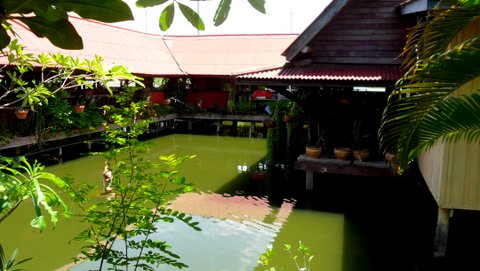
Restaurant in a prawn farm We were not disappointed; the food was good enough to write home about. Here’s what we had; deep fried fish with chili sauce and wild boar meat fried in a dry curry, all of which are hot and spicy. 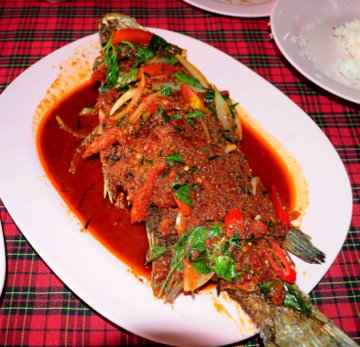
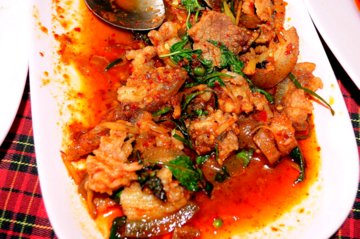
Contributed by Lim Siew Hwei Here’s the address: Tambon Ban Song Phanom Sarakham Chachoengsao Tel: +66 38 552 430 If you are in the area, drop in for a leisurely lunch. Table of contents Map to Si Mahosot district, Prachinburi View Si Mahosot Ancient City in a larger map Addresses Sra Morakot Ancient City Tambon Khok Thai Amphur Si Mahosot Prachinburi Si Mahosot Ancient City Tambon Khok Pip Amphur Si Mahosot Prachinburi Opening hours Open daily, visit these ruins any time during the day. Admission fees Admission to these ruins is free. How to get to there By car We took the southern route through Chachoengsao, Bang Na – Trad Road – Highway 314 to Chachoengsao – turn right before entering the city to Highway 304 – then turn left into Highway 319 to Si Mahosot district. Table of contents My thanks My thanks to Lim Siew Hwei for driving us to explore Si Mahosot district in Prachinburi. Siew Hwei is a fellow-Singapore who shares my passion for visiting places of historical and cultural interest. He is also an avid photographer and I am grateful for his photo contributions to the Travelbug. Table of contents Next month We visit Wat Lam Phaya floating market in Nakhon Pathom If you enjoyed reading this e-zine, please forward it to a friend. If you received this from a friend and found it interesting, please subscribe at Bangkok Travelbug. What you think of the Bangkok Travelbug? We love to hear from you What other subscribers have said Till next month then. Eric Lim Tour Bangkok Legacies Find us on Facebook Copyright@2008-2014 Tour Bangkok Legacies All rights reserved |
| Back to Back Issues Page |
